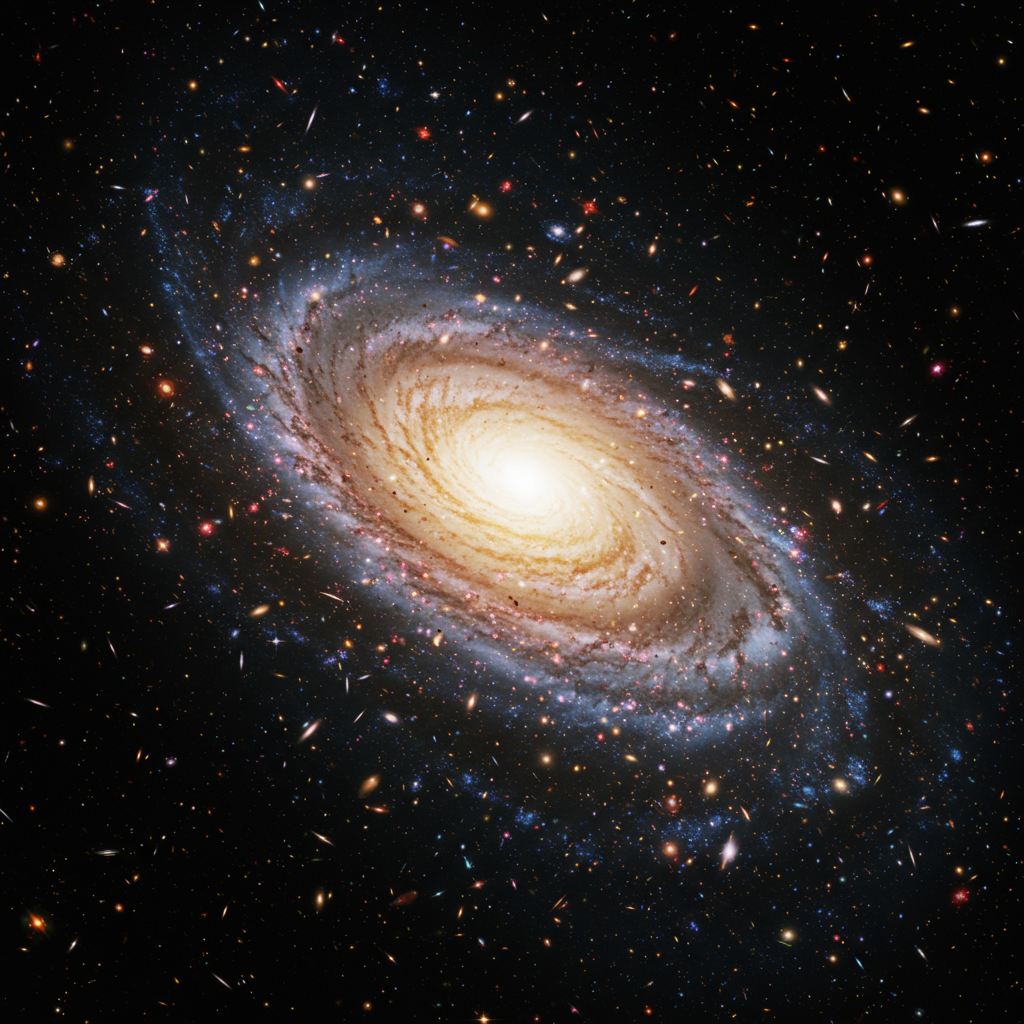What if our fundamental understanding of the universe is profoundly wrong?
For centuries, physics has largely viewed time as a single, linear dimension marching steadily forward within a backdrop of three spatial dimensions. We move through space, while time simply passes. But what if time isn’t just the stage for the cosmic play, but the very fabric the stage is woven from?
A radical new theory, proposed by physicist Gunther Kletetschka at the University of Alaska Fairbanks Geophysical Institute, suggests exactly that. His mathematical framework posits that time is the fundamental, three-dimensional foundation of the universe, making space secondary – “more like the paint on the canvas rather than the canvas itself.”
This isn’t just splitting hairs; it’s a complete inversion of reality as we understand it. And this daring perspective might just hold the key to unlocking physics’ greatest puzzle: unifying the quantum realm with gravity.
Beyond the Arrow: Picturing Three-Dimensional Time
It’s hard to imagine time having dimensions beyond forward/backward, but Kletetschka offers an analogy. Think of our familiar passage through time as walking down a straight path.
Now, picture two other paths crossing the first one perpendicularly.
Stepping onto a second temporal path, while staying in the same ‘moment’ on your original path, could allow you to encounter a slightly different version of that moment – like exploring alternative potential realities or outcomes.
The third temporal dimension represents the ability to transition or move between these different temporal paths or possibilities.
This isn’t mere philosophical speculation. Kletetschka’s framework produces concrete, testable predictions.
Solving Particle Physics Mysteries from Time’s Structure
One of the most compelling results is the theory’s success in explaining long-standing puzzles in particle physics. Why does matter appear in exactly three generations (like the electron, muon, and tau)? Why do these particles have seemingly arbitrary mass relationships?
In the three-dimensional time framework, these generations emerge naturally from the structure of time itself through fundamental equations. The theory predicts specific mass ratios across particle families (1:4.5:21.0) that aren’t assumed, but arise from the mathematics.
The predictions are remarkably precise:
Top Quark Mass: Predicted at 173.21 ± 0.51 GeV (matching measured 173.2 ± 0.9 GeV)
Electron Mass: Matches experimental values to nine decimal places.
Neutrino Masses: Provides specific, precise predictions for the masses of the three neutrino types.
New Particles: Predicts previously unknown particle resonances at 2.3 ± 0.4 TeV and 4.1 ± 0.6 TeV.
The theory even explains why weak nuclear forces exhibit a mysterious preference for left-handed particles (parity violation) – it falls out naturally from the geometry of three-dimensional time.
Bridging the Cosmic Divide: Quantum Mechanics Meets Gravity
For over a century, physicists have struggled to reconcile the rules governing the very small (quantum mechanics) with those governing the very large (general relativity, which describes gravity). Theories attempting to unify them often produce mathematical absurdities, like infinities, particularly when describing gravity at the quantum level.
Kletetschka’s three-dimensional time framework achieves something unprecedented: it produces finite, well-behaved quantum gravity corrections, naturally eliminating the infinities that plague other theories. The additional temporal dimensions act as an intrinsic “regularization” mechanism.
This ability to handle quantum gravity is crucial, especially as physicists explore the fundamental nature of spacetime and gravity itself. Some cutting-edge theories propose that gravity isn’t a fundamental force at all, but an emergent phenomenon. One such idea suggests gravity arises from fundamental quantum interactions and thermodynamics, with spacetime itself emerging from these processes. Another radical hypothesis connects gravity to a principle of information compression, positing that the universe operates like a sophisticated computer and gravity is the outcome of minimizing the information needed to describe aggregated matter – even leading to speculation that the universe might be a simulation.
While these emergent gravity ideas offer alternative pathways, Kletetschka’s 3D time theory provides a unique geometric explanation for quantum gravity’s compatibility, making testable predictions. It predicts specific gravitational wave signatures, including propagation speeds slightly different from light and additional polarization modes, measurable by upcoming detectors.
Testing the Fabric of Reality
Unlike many theoretical proposals, this framework makes concrete predictions verifiable in the near future:
The High-Luminosity Large Hadron Collider is expected to find the predicted new particles by 2030.
Advanced LIGO+ observations could confirm the specific gravitational wave modifications.
Cosmological surveys (like the Euclid space mission and Vera Rubin Observatory starting in 2027) will test the theory’s predictions for the evolution of dark energy, which should follow a specific pattern (w(z) = -1 + (0.05 ± 0.01)(1+z)³).
The nature of dark energy, the mysterious force driving the universe’s accelerated expansion, is another area where multiple theories converge. Besides the UAF theory’s prediction for its behavior, other research explores possibilities like microscopic quantum wormholes arising from spacetime fluctuations as the source of dark energy, offering a dynamic explanation for its effects. Kletetschka’s framework offers yet another distinct, testable signature for this cosmic enigma.
The exploration of such fundamental questions also touches upon the challenges posed by singularities, points of infinite density and curvature like those found in black holes, where current physics breaks down. While general relativity predicts singularities, quantum mechanics is being explored to understand if it enforces a “cosmic censorship,” hiding these points behind event horizons and preserving the universe’s predictability. A theory like Kletetschka’s, which handles quantum gravity without infinities, could be vital in developing a complete picture of physics even at these extremes.
A New Lens on Existence
Published in Reports in Advances of Physical Sciences*, this theory represents a bold step. If confirmed by experiments, it would fundamentally alter our understanding of reality. Time would no longer be a simple river flowing through space, but the deep, multi-dimensional ocean from which space itself emerges.
Matter, energy, and forces might all turn out to be different manifestations of this underlying temporal geometry.
“The path to unification might require fundamentally reconsidering the nature of physical reality itself,” Kletetschka notes. His work shows how viewing time as three-dimensional naturally resolves multiple physics puzzles within a single, cohesive structure.
Sometimes, the most profound breakthroughs come not from adding complexity, but from realizing we’ve been looking at reality from an entirely different perspective. The true nature of the universe might be stranger, and more elegant, than we ever imagined.




